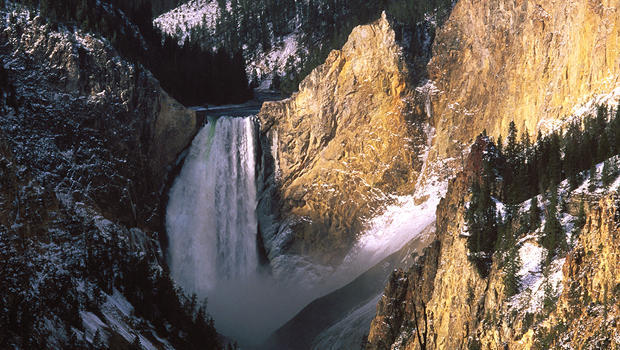Nature up close: How waterfalls form
By "Sunday Morning" contributing videographer Judy Lehmberg.
One of the greatest moments in my life was when I finally got to see Victoria Falls in person. It actually exceeded my expectations even though I had been dreaming of that moment for over 30 years. It wasn't the first large waterfall I had seen, but it was the most spectacular. And to make it even better I was totally by myself. I could pretend I was the first person to ever see those falls.
Big impressive falls like Victoria dwarf humans by their sheer size, power and roar. Victoria Falls is on the Zambezi River, which separates Zambia from Zimbabwe. In those countries, its name is Mosi-oa-Tunya, "The Smoke that Thunders."
Saying Victoria Falls is the most spectacular waterfall may sound misleading to people visiting Niagara Falls, Yellowstone's Lower Falls, or Yosemite's Bridalveil Falls. They are all spectacular. But who has seen them alone?
I took a geology class in college that included a six-week field trip to many geologically-important areas in the Western U.S. It was a wonderful trip, in part because our professor was always there to answer questions. When anyone asked him how a particular geological feature formed, the answer was either a fault or differential erosion, or occasionally a combination of the two. Sounds pretty simple, and it is. It took me a while to realize it, but most waterfalls form by one of those methods on a geologically young river.
A fault is simply a crack in the Earth's crust, accompanied by rock movement on one side of the crack either up or down. The most striking example of a waterfall formed by a fault is Victoria Falls in southern Africa. The geologically-recent uplift of east Africa and the faulting associated with the African Rift Valley system provides the Zambezi River with the power necessary to cut into the hard basalt rock over which it flows.
At the edge of the basalt, the river has eroded away softer layers below and has gradually carved a canyon upstream into the basalt.
Differential erosion is erosion that occurs at varying speeds, due to differences in the resistance and hardness of materials; soft rocks erode faster than hard rocks. Niagara Falls formed this way when a hard, upper layer of limestone eroded more slowly than a lower, softer shale.
In all of these examples, the geologic activity producing the waterfalls is quite recent -- perhaps 10,000 to 15,000 years for Niagara and Bridalveil Falls, and probably somewhat longer in the case of Victoria Falls. Waterfalls are short-lived geological phenomena (Niagara will be gone in about 50,000 years, a geological blink of an eye). Enjoy them while you can!
Waterfalls don't have to roar like Niagara or Victoria to be appreciated. A waterfall's sound can be awe-inspiring or soothing, depending on its size and distance away. The restful tinkle of a one-foot-high waterfall or the swish of a gentle cascade is a restful respite for a hiker in an otherwise silent forest.
The fresh young leaves
The sound of a waterfall
Both near and far
– Yosa Buson, (1716-1784)
Judy Lehmberg is a former college biology teacher who now shoots nature videos.
For more info:
- Judy Lehmberg (Official site)
- Judy Lehmberg's YouTube Channel
To watch extended "Sunday Morning" Nature videos click here!






